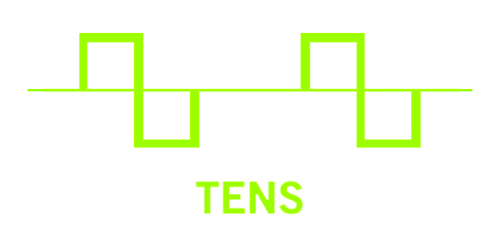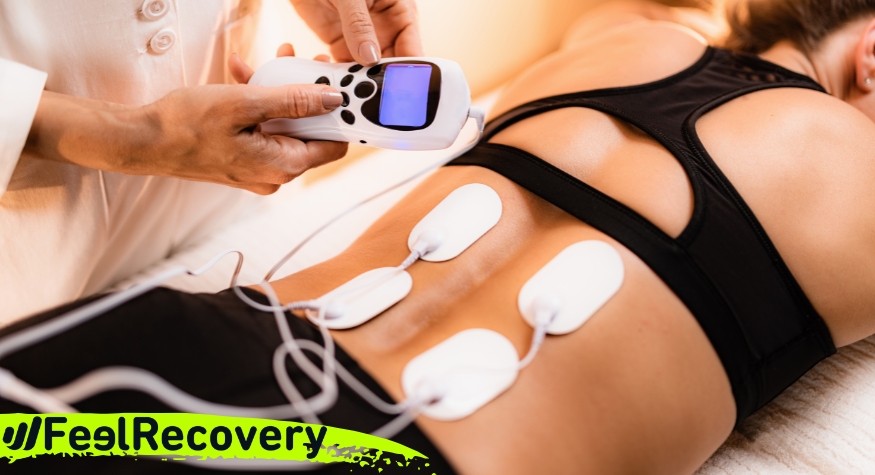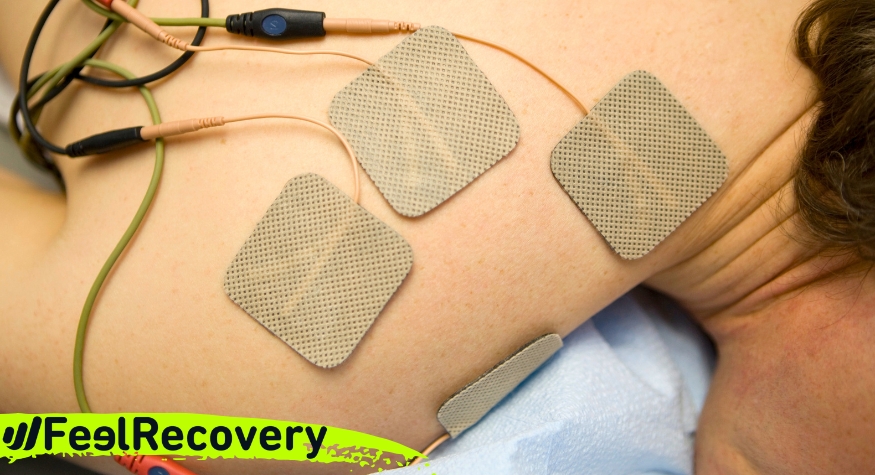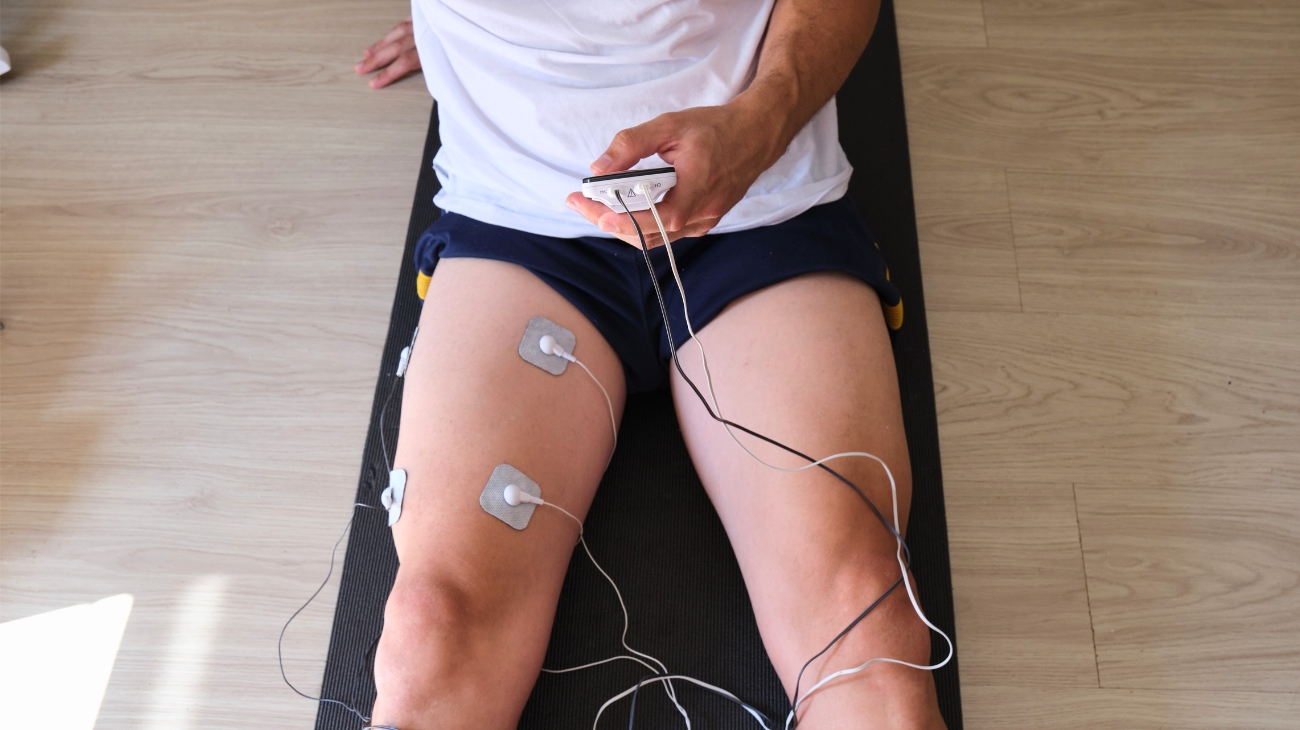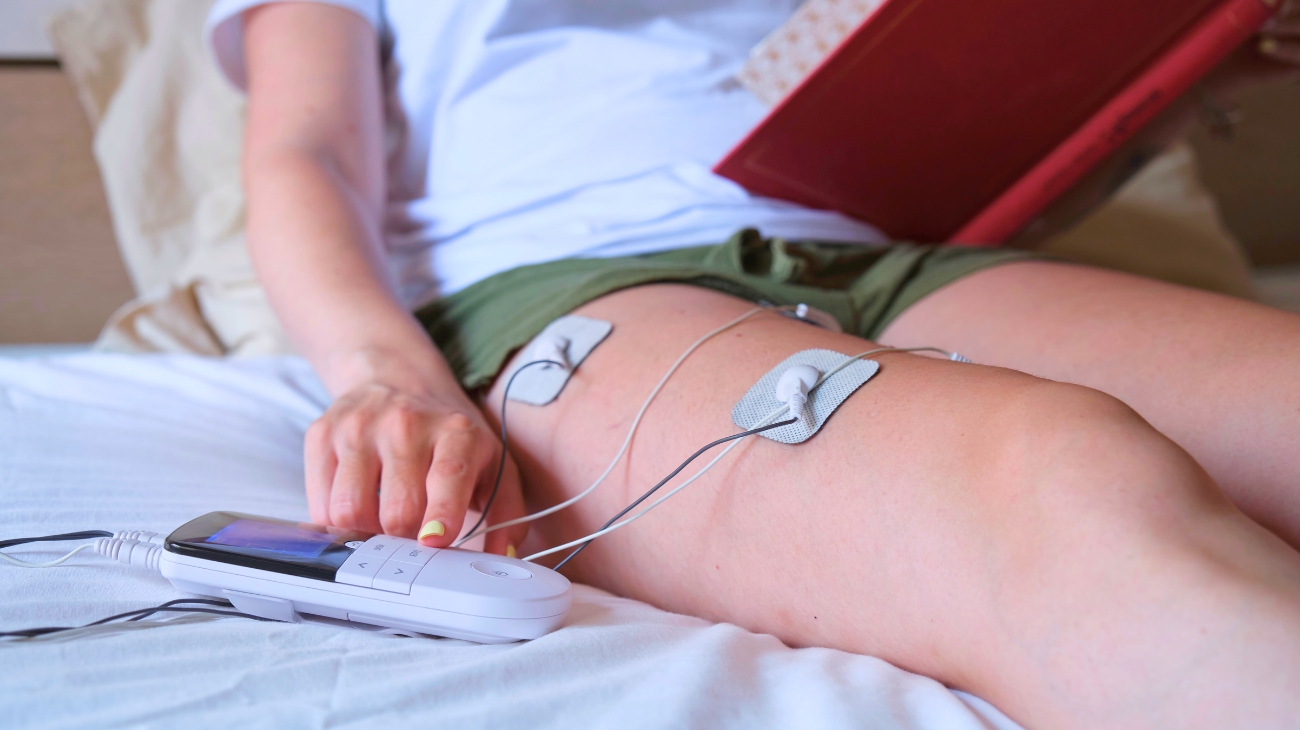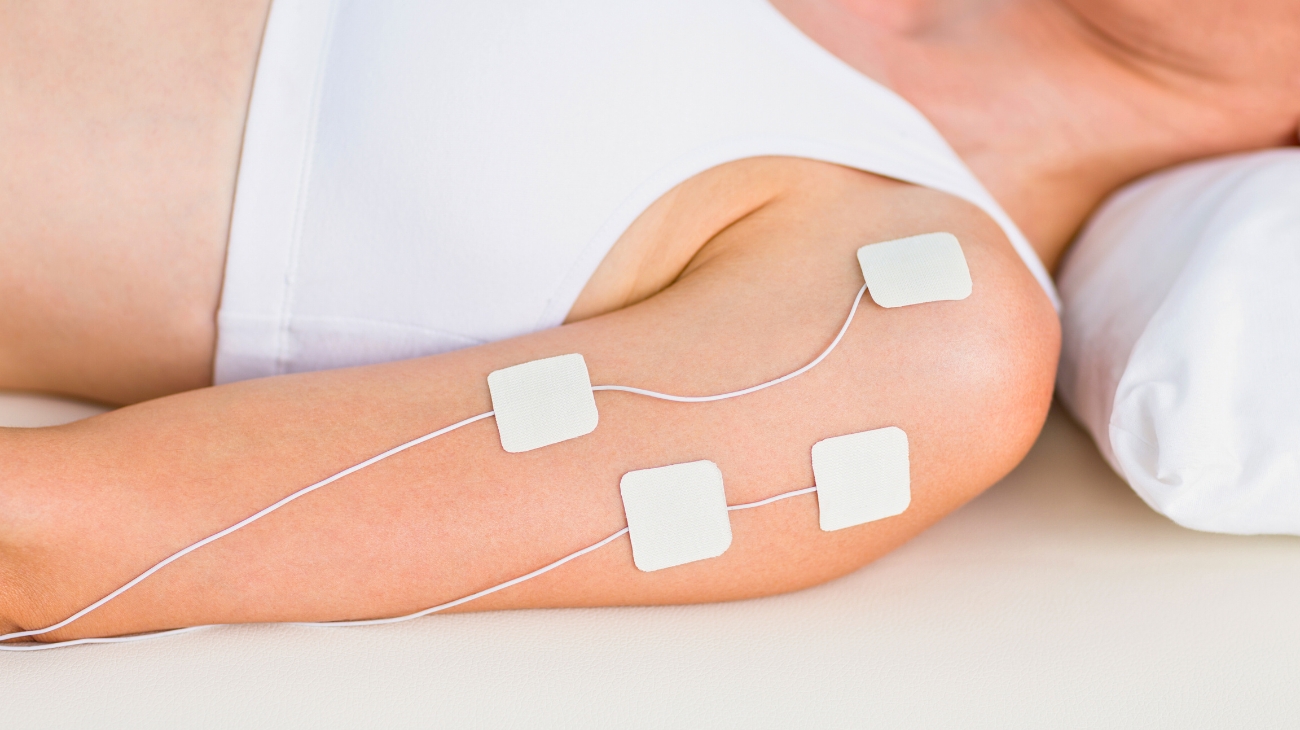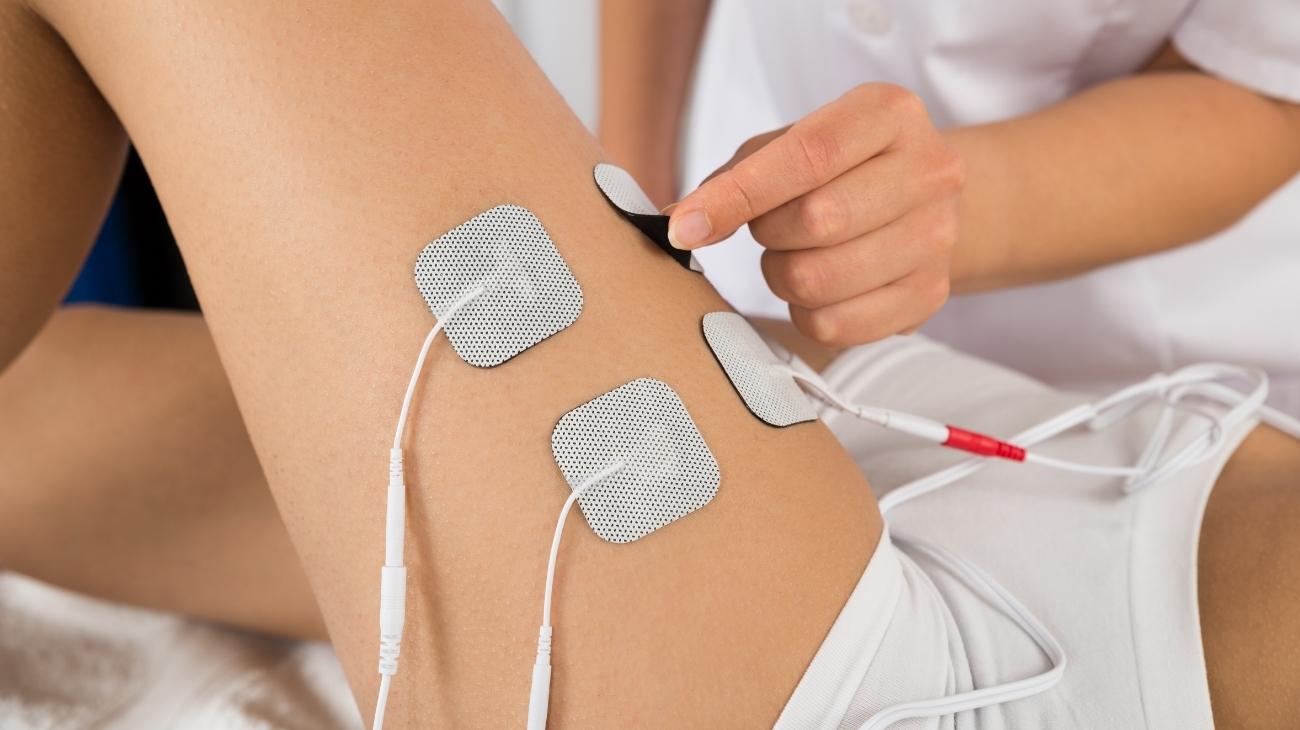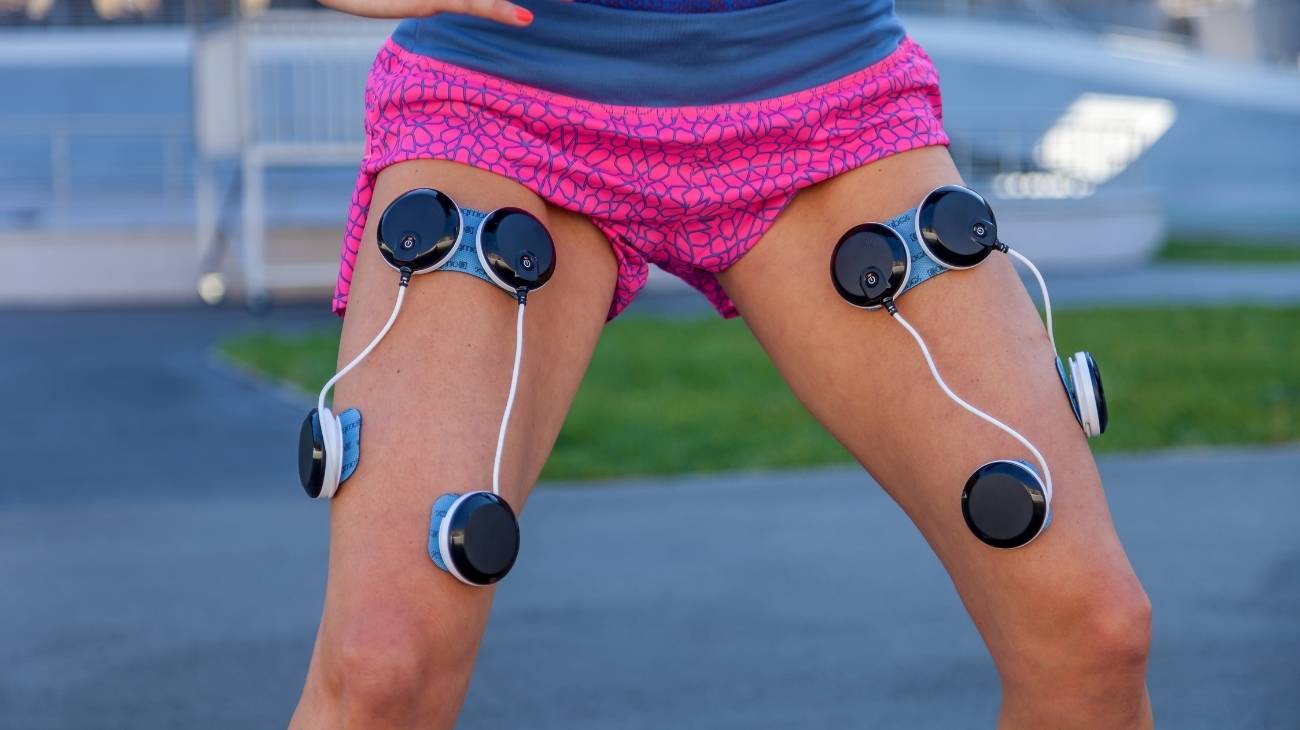A wide range of injuries and conditions can cause varying degrees of pain in one or multiple areas of the body, depending on the type of injury or disorder. For this reason, it is essential to have a method available to minimize pain sensation during the recovery period. This is where electrostimulation comes into play, specifically in the form of TENS electrotherapy.
TENS, or Transcutaneous Electrical Nerve Stimulation, is a method used to minimize pain caused by diseases or injuries in a specific area and requires consideration of various factors. In the following paragraphs, you will learn everything you need to know about TENS therapy and how to apply it correctly for the treatment of various ailments.
What is a TENS device?
Did you know that TENS units work by blocking pain signals before they reach the brain? Research from the Cleveland Clinic explains that transcutaneous electrical nerve stimulation (TENS) sends low-voltage electrical impulses through the skin to stimulate nerve fibers. This process, known as the "Gate Control Theory," helps prevent pain signals from being transmitted, providing relief for conditions like arthritis, neuropathy, and muscle injuries.
A Transcutaneous Electrical Nerve Stimulation (TENS) device is a battery-operated unit designed to interrupt the body’s pain signals through electrical impulses that counteract them. It is commonly prescribed by doctors for pain management in conditions such as arthritis, migraines, amputations, and sports injuries, among others.
It is one of the most widely used methods in physiotherapy for pain relief due to its effect on nerves and fibrous tissue in the affected area, boasting a high success rate, no side effects, and no use of addictive medications.
How do TENS devices work?
Did you know that TENS therapy can reduce the need for pain medication by up to 66%? According to studies conducted by the National Institutes of Health (NIH) and published in the Journal of Clinical Medicine, patients using TENS units for chronic pain management reported a significant reduction in their reliance on opioids and over-the-counter painkillers. By providing non-invasive, drug-free relief, TENS therapy is an effective alternative for those seeking natural pain management solutions.
A TENS device works by applying electrical currents of varying intensity to the most affected area through electrodes placed on the skin in the treatment region. These electrical impulses block nerve signals, preventing them from reaching the brain and stopping it from registering pain sensations.
For a TENS device to work effectively, factors such as correct electrode placement and the appropriate intensity of the electrical currents must be considered.
Electrodes
Electrodes come in various sizes and shapes with an adhesive surface, which are placed on specific areas of the body to release electrical currents at different frequencies and intensities, reducing the sensation of pain.
These electrodes may vary depending on whether they are designed for a specific device. However, universal formats are also available, compatible with most TENS devices.
Currents and Frequency
Pain perception occurs in the gray matter at the midbrain level and is modulated by multiple regions along the nerve branches of the spinal cord in the peripheral nervous system. This sensory network can be influenced through transcutaneous electrical stimulation.
The goal of these impulses is to induce analgesia in the treated area, which can be achieved with frequencies ranging between 50 and 100 Hz. This is due to the stimulation of myelinated fibers that block the electrical impulses from nociceptors in the treated region.
What is a TENS unit used for?
Did you know that while TENS units are safe, they may not work for all types of pain? A study from the Mayo Clinic highlights that TENS therapy is highly effective for nerve-related and musculoskeletal pain but may be less effective for deep, chronic pain conditions such as severe arthritis or advanced neuropathy. Additionally, individuals with pacemakers or heart conditions should consult a doctor before use, as electrical stimulation could interfere with medical devices.
Transcutaneous Electrical Nerve Stimulation is well known for its versatility in relaxing fibrous tissue and reducing pain sensations, making it one of the most commonly used electrostimulation methods in physiotherapy.
Some of its primary uses include:
- Pain relief: Its electrical impulses block pain signals sent by nerve tissue in the affected area, preventing them from reaching the brain and reducing the patient’s pain sensation.
- Nerve repair: Low-frequency TENS currents can have a positive impact on nerve regeneration, aiding conditions such as peripheral neuropathy.
- Vasodilation: Electrical impulses applied to the affected area generate heat, leading to blood vessel dilation and improved circulation.
- Increases pain threshold: The frequencies used act directly on pain receptors in the nerve branches of the treated areas, increasing tolerance during and after the session.
Types injuries that can be treated with TENS machines
The versatility of Transcutaneous Electrical Nerve Stimulation (TENS) devices makes them ideal for treating a wide range of conditions from different origins. Among the most commonly treated types of pain that show significant effectiveness, we can highlight the following:
- Musculoskeletal pain: Injuries such as muscle contractures, tears, and fractures can be treated using TENS electrical impulses.
- Postoperative pain: Surgical procedures often leave residual pain in the patient, making TENS electrotherapy highly recommended to facilitate a more tolerable recovery process.
- Neuropathies: Neuropathies result from varying degrees of nerve damage and can cause significant pain in the hands and feet. TENS therapy is an effective way to reduce pain caused by this condition.
- Trauma-related pain: Traumas can cause different types and degrees of damage, leading to significant pain in the affected area. TENS therapy is highly recommended for managing such pain.
- Sports injuries: Injuries sustained from sports activities can vary widely, from ligament sprains to bone fractures.
- Acute and chronic pain: This category is distinguished based on the duration of the pain. Both acute and chronic pain can be managed using TENS electrostimulation.
How to use a TENS machine?
Although TENS devices are generally very safe and easy to use, certain factors must be considered to determine the effectiveness of the treatment. The most important factors to pay attention to include electrode placement, electrical impulse intensity, and session duration.
Electrode Placement Tips
Proper placement of TENS electrodes is crucial to achieving optimal therapy effectiveness. While appropriate positions vary depending on the areas being treated, general rules apply to ensure an effective session.
- Place the electrodes symmetrically around the central pain point.
- Position multiple electrodes around the area to maximize nerve stimulation in the affected region.
- Use different types of pads for various body areas to increase the effectiveness of electrical impulses.
- Avoid placing electrodes on the neck and chest as this may cause ventricular fibrillation due to proximity to the heart.
Session Duration
TENS electrotherapy sessions can be applied as often as necessary, depending on the frequency and intensity of pain. The most effective number of applications is typically two to three times per day.
Since TENS therapy has no side effects, prolonged application is completely safe. However, the ideal session duration ranges from 30 to 40 minutes, allowing the body to produce endorphins and create an analgesic effect in the treated area.
What Intensity Should Be Used?
Pain relief through electrotherapy can be achieved at various frequencies and intensities. The most important criterion for determining the appropriate intensity range is the duration of the pain—whether it is acute or chronic.
The most effective intensity for treating acute pain ranges between 80 and 120 Hz, while chronic pain responds better to lower frequencies, typically between 2 and 10 Hz over more extended periods.

